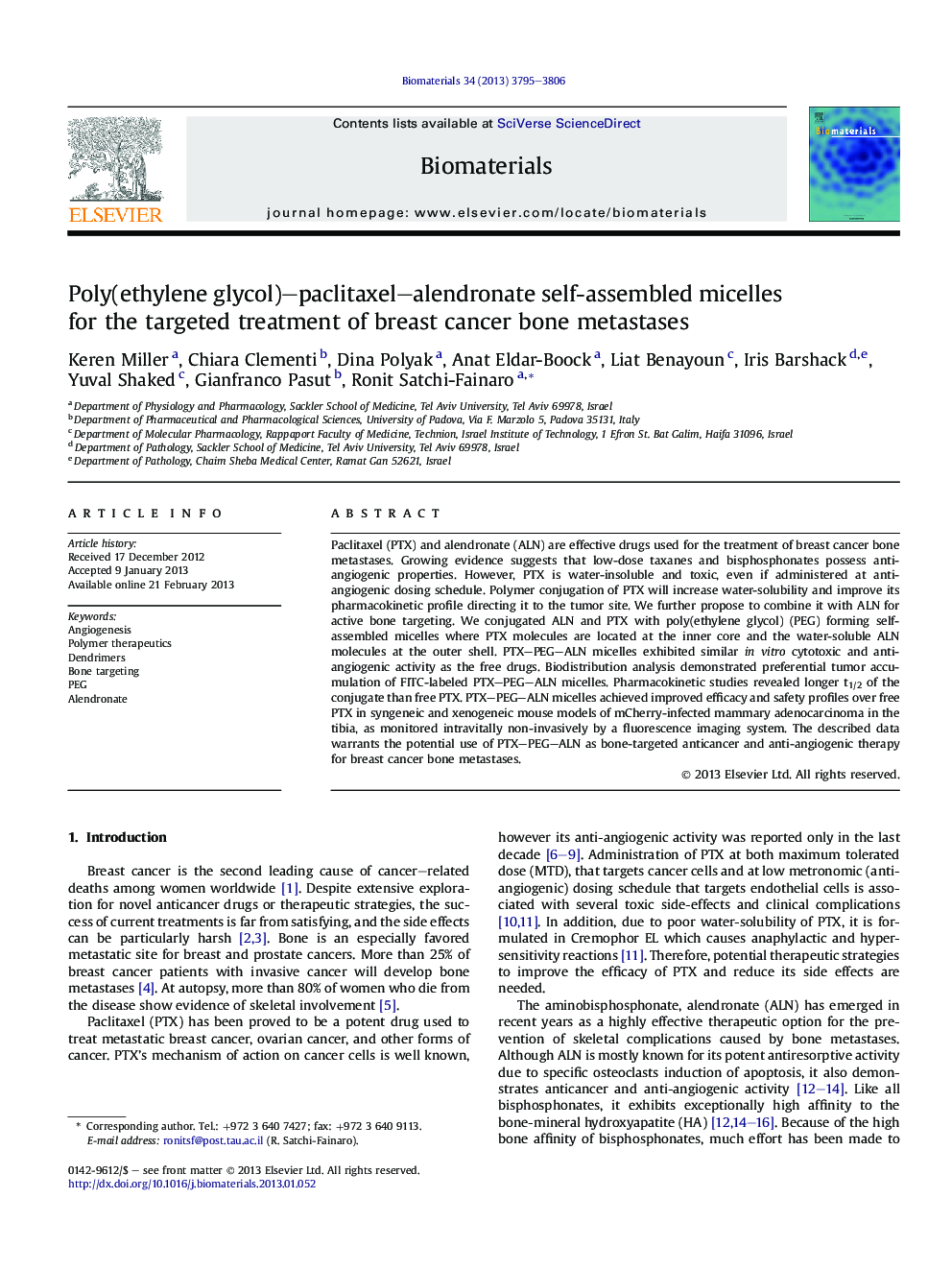| Article ID | Journal | Published Year | Pages | File Type |
|---|---|---|---|---|
| 10228743 | Biomaterials | 2013 | 12 Pages |
Abstract
Paclitaxel (PTX) and alendronate (ALN) are effective drugs used for the treatment of breast cancer bone metastases. Growing evidence suggests that low-dose taxanes and bisphosphonates possess anti-angiogenic properties. However, PTX is water-insoluble and toxic, even if administered at anti-angiogenic dosing schedule. Polymer conjugation of PTX will increase water-solubility and improve its pharmacokinetic profile directing it to the tumor site. We further propose to combine it with ALN for active bone targeting. We conjugated ALN and PTX with poly(ethylene glycol) (PEG) forming self-assembled micelles where PTX molecules are located at the inner core and the water-soluble ALN molecules at the outer shell. PTX-PEG-ALN micelles exhibited similar in vitro cytotoxic and anti-angiogenic activity as the free drugs. Biodistribution analysis demonstrated preferential tumor accumulation of FITC-labeled PTX-PEG-ALN micelles. Pharmacokinetic studies revealed longer t1/2 of the conjugate than free PTX. PTX-PEG-ALN micelles achieved improved efficacy and safety profiles over free PTX in syngeneic and xenogeneic mouse models of mCherry-infected mammary adenocarcinoma in the tibia, as monitored intravitally non-invasively by a fluorescence imaging system. The described data warrants the potential use of PTX-PEG-ALN as bone-targeted anticancer and anti-angiogenic therapy for breast cancer bone metastases.
Related Topics
Physical Sciences and Engineering
Chemical Engineering
Bioengineering
Authors
Keren Miller, Chiara Clementi, Dina Polyak, Anat Eldar-Boock, Liat Benayoun, Iris Barshack, Yuval Shaked, Gianfranco Pasut, Ronit Satchi-Fainaro,
